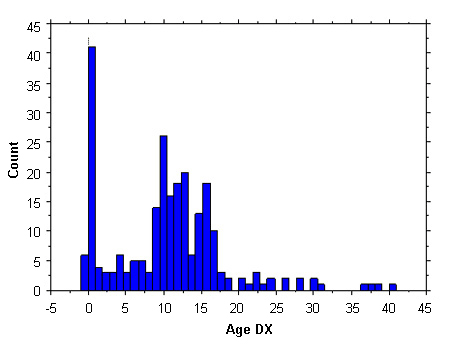Epidemiology
Turner syndrome occurs equally in all races and regions of the world. It is sporadic in occurrence except for rare cases in which a small X chromosome deletion may be passed from mother to daughter.
The number of females diagnosed antenatally may increase with increased use of non-invasive prenatal testing (NIPT).[8] Regardless, a postnatal karyotype is necessary to confirm the diagnosis.[5] Historically, less than 10% of cases are diagnosed antenatally; a further 20% are detected in infancy owing to the presence of lymphoedema, neck webbing, or congenital heart defects. Relatively few patients are diagnosed during early childhood and they usually present with short stature. The largest proportion of detection is at 10 to 16 years of age, owing to a combination of marked short stature and delayed puberty. Another 10% are diagnosed in adulthood, owing to secondary amenorrhoea. There are similar ascertainment profiles for Europe and the US.[9][10]
[Figure caption and citation for the preceding image starts]: Ascertainment profile data of Turner syndrome; 300 females; Age DX, age (in years) at diagnosisFrom the personal collection of Carolyn Bondy, MS, MD (National Institute of Child Health and Human Development natural history study 2001-2007; McCarthy K, et al. Expert Rev Endocrinol Metab. 2008;3:771-775) [Citation ends].
Whereas large-scale cytogenetic screening of newborns conducted in the 1970s and 1980s indicated a Turner syndrome incidence of about 1 case per 2000-2500 live female births,[11][12] more recent surveys suggest a lower incidence of about 1 case per 5000 live female births due to antenatal diagnosis associated with terminations of pregnancies.[13]
Use of this content is subject to our disclaimer